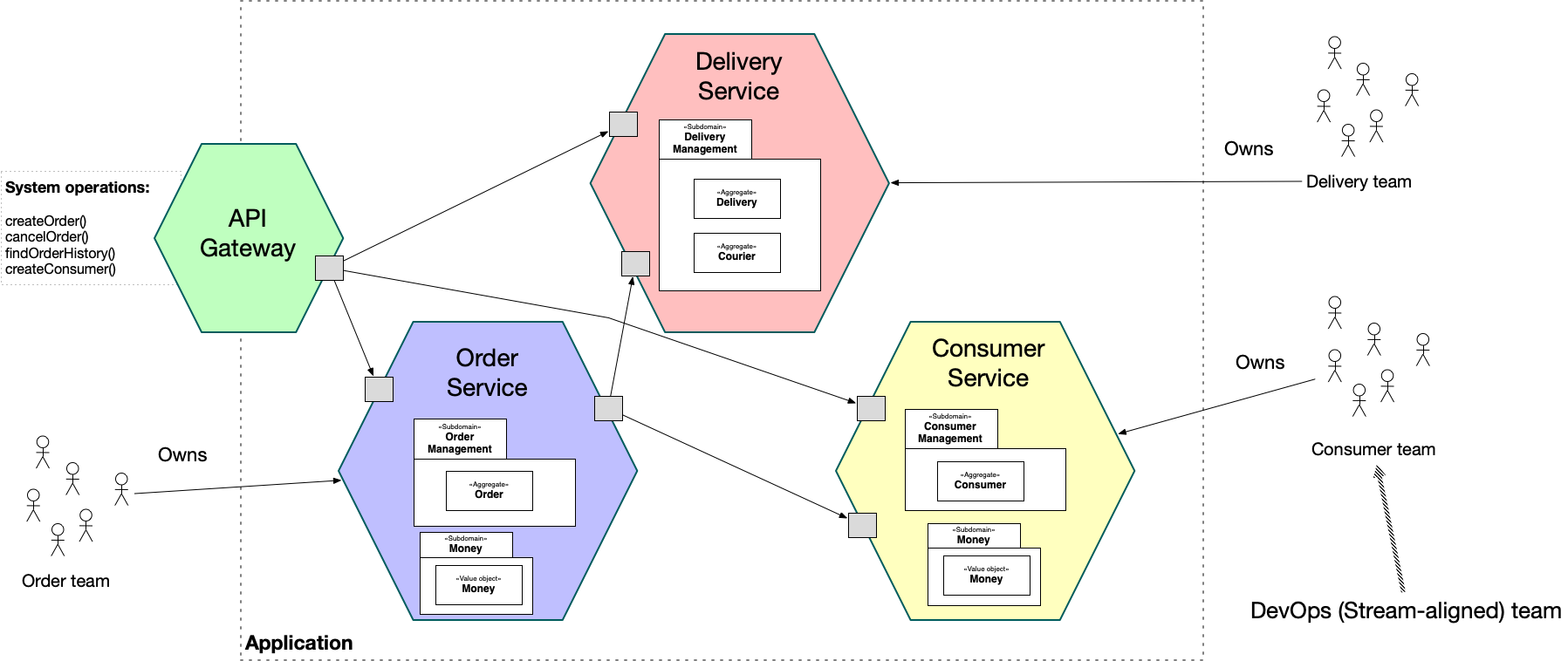Microservice architecture has revolutionized how we build and deploy software applications. Instead of monolithic giants, we now create systems from small, independent services that communicate with each other. This article explores the core concepts, benefits, drawbacks, and practical implementation of microservices, focusing on Java as the primary language.
1. Introduction: The Rise of Microservices
Traditional monolithic applications, while simpler to initially develop, often struggle with scalability, maintainability, and deployment. Microservices address these challenges by decomposing applications into a suite of small, autonomous services, each representing a specific business capability. These services communicate via lightweight mechanisms, often an HTTP resource API.
2. Core Principles of Microservices
Several key principles underpin the microservices approach:
- Single Responsibility Principle: Each service should have a single, well-defined purpose. This promotes modularity and makes services easier to understand and maintain.
- Loose Coupling: Services should be independent of each other, minimizing dependencies. This allows for independent deployment, scaling, and technology choices for each service.
- Bounded Context: Each service operates within a specific domain or business context, ensuring clear boundaries and avoiding ambiguity.
- Decentralized Governance: Teams can choose the best technologies and tools for their specific service, fostering innovation and flexibility.
- Independent Deployment: Services can be deployed and updated independently, without affecting the entire application.
- Automation: Automated testing, deployment, and monitoring are crucial for managing a large number of microservices.
3. Advantages of Microservices
- Improved Scalability: Individual services can be scaled independently based on demand, optimizing resource utilization.
- Increased Flexibility: Different services can be developed and deployed using different technologies, allowing teams to choose the best tool for the job.
- Enhanced Maintainability: Smaller services are easier to understand, modify, and debug, reducing the risk of introducing bugs.
- Faster Development Cycles: Independent teams can work on different services simultaneously, accelerating development.
- Better Fault Isolation: A failure in one service does not necessarily bring down the entire application.
4. Disadvantages of Microservices
- Increased Complexity: Managing a large number of services can be challenging, requiring robust monitoring, logging, and distributed tracing.
- Communication Overhead: Inter-service communication adds latency and can impact performance.
- Data Consistency: Maintaining data consistency across multiple services can be complex, often requiring distributed transactions or eventual consistency patterns.
- Testing Challenges: Testing microservices requires a different approach than testing monolithic applications, often involving contract testing and integration testing.
- Deployment Complexity: Deploying and managing a large number of services can be complex, requiring sophisticated deployment pipelines.
5. Example: E-commerce Application
Consider a typical e-commerce application. In a microservices architecture, it could be broken down into services like:
- Product Catalog Service: Manages product information.
- Order Service: Handles order processing.
- Payment Service: Processes payments.
- Shipping Service: Manages shipping and delivery.
- Customer Service: Manages customer profiles and interactions.
Each of these services can be developed, deployed, and scaled independently.
6. Java Implementation
Java is a popular choice for building microservices due to its rich ecosystem, mature frameworks, and strong community support. Here’s a basic example using Spring Boot:
Java
// Product Catalog Service (simplified)
@SpringBootApplication
@RestController
public class ProductCatalogService {
@GetMapping("/products")
public List<Product> getProducts() {
// Retrieve products from database or other source
List<Product> products = new ArrayList<>();
products.add(new Product("1", "Laptop"));
products.add(new Product("2", "Mouse"));
return products;
}
public static void main(String[] args) {
SpringApplication.run(ProductCatalogService.class, args);
}
}
class Product {
String id;
String name;
// Constructor, getters, and setters
public Product(String id, String name) {
this.id = id;
this.name = name;
}
// ... getters and setters ...
}This example demonstrates a simple Spring Boot application that exposes a REST endpoint to retrieve product information. Similar services can be created for other functionalities.
7. Key Technologies and Tools
- Spring Boot: Simplifies the development of microservices in Java.
- Spring Cloud: Provides tools for service discovery, configuration management, and fault tolerance.
- Netflix OSS Components: Libraries like Eureka (service discovery), Ribbon (load balancing), and Hystrix (circuit breaking).
- Docker: Containerization platform for packaging and deploying microservices.
- Kubernetes: Orchestration platform for managing and scaling containerized microservices.
- Message Brokers (e.g., Kafka, RabbitMQ): For asynchronous communication between services.
- API Gateways: Centralized entry point for all client requests, handling routing, authentication, and authorization.
- Distributed Tracing (e.g., Jaeger, Zipkin): Tools for tracking requests across multiple services.
- Monitoring and Logging: Essential for monitoring the health and performance of microservices.
8. Best Practices
- Design for Failure: Implement fault tolerance mechanisms like circuit breakers and retries.
- Use API Gateways: Simplify client access and manage cross-cutting concerns.
- Embrace Asynchronous Communication: Reduce coupling and improve performance.
- Automate Everything: Automate testing, deployment, and monitoring.
- Monitor and Log Extensively: Gain insights into the behavior of your microservices.
9. Conclusion
Microservices offer significant advantages for building scalable, maintainable, and flexible applications. While they introduce complexities, proper planning, the right tools, and adherence to best practices can help you successfully implement a microservices architecture. Java, with its rich ecosystem, provides a solid foundation for developing robust and efficient microservices. Remember that microservices are not a silver bullet; they are a tool to be used when appropriate, and careful consideration should be given to the trade-offs involved.

Very easy, undebatable, understandable, short article about microservice architecture
Thanks for your inspiration.
Thanks for your inspiration.
Really, I am very happy for your time.
Thanks again
Excellent analysis! Sprunki Game is worth exploring.
Thanks for your comments..